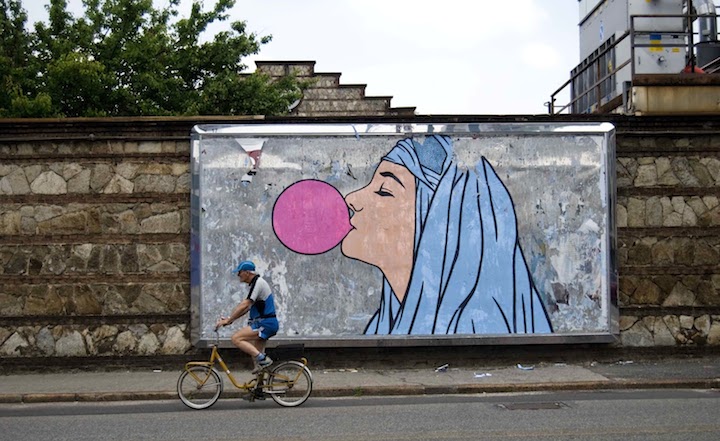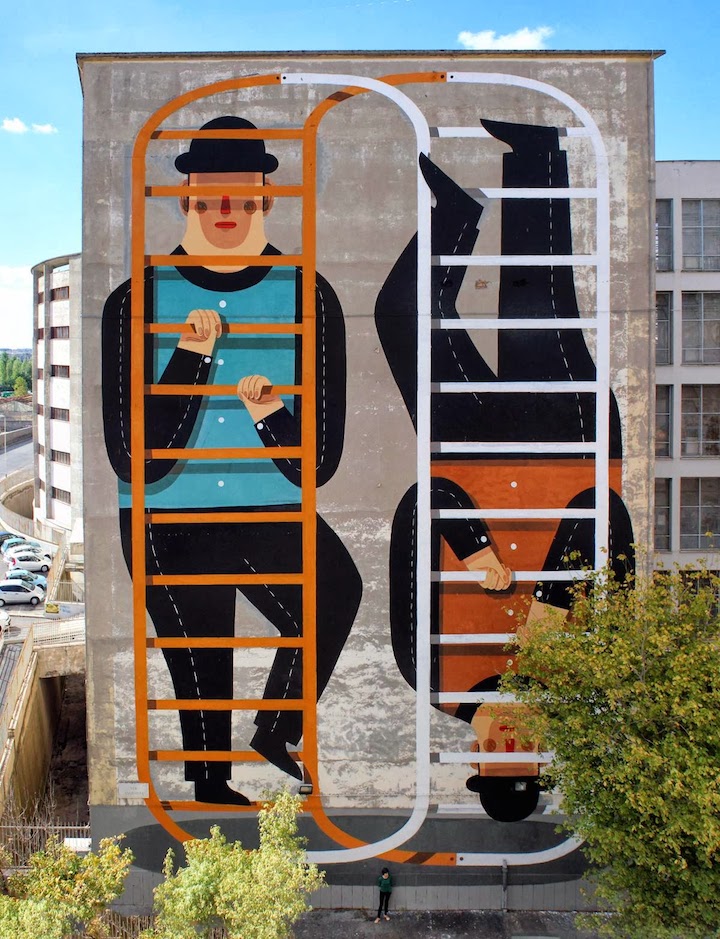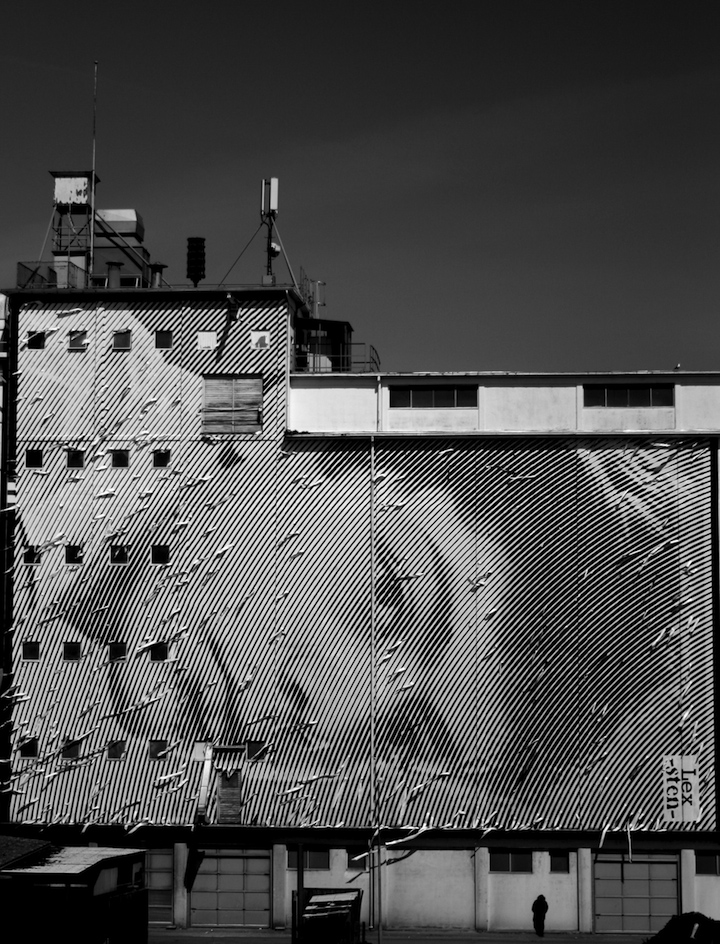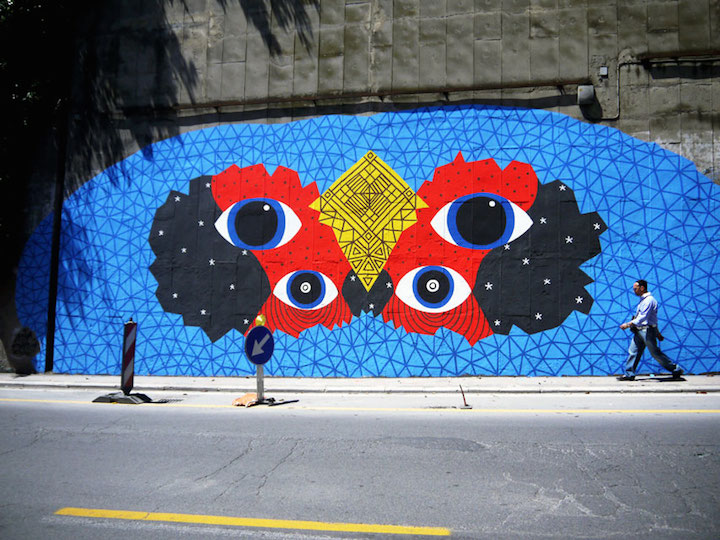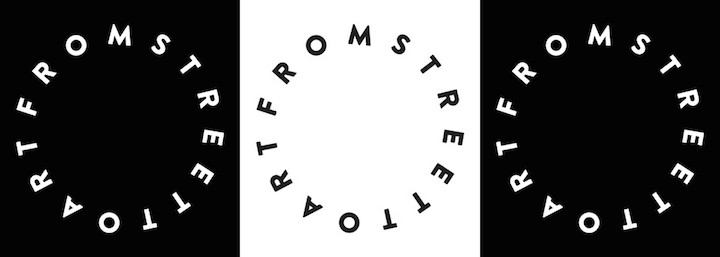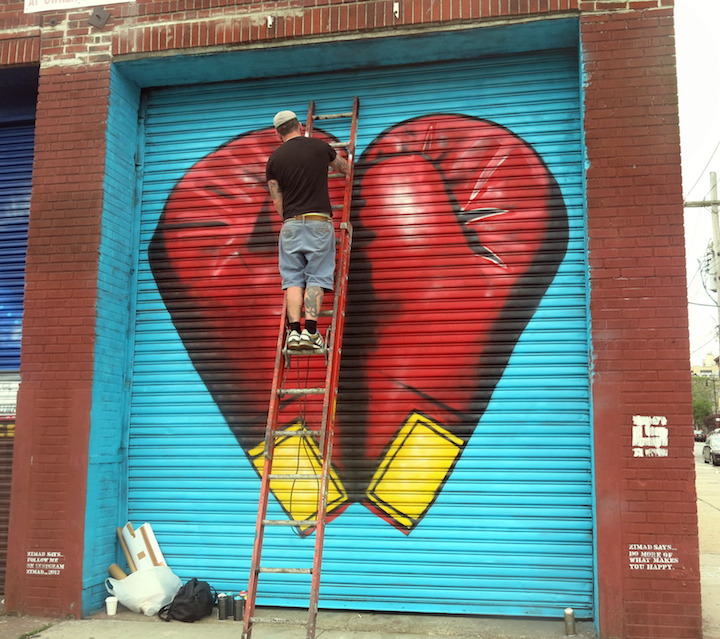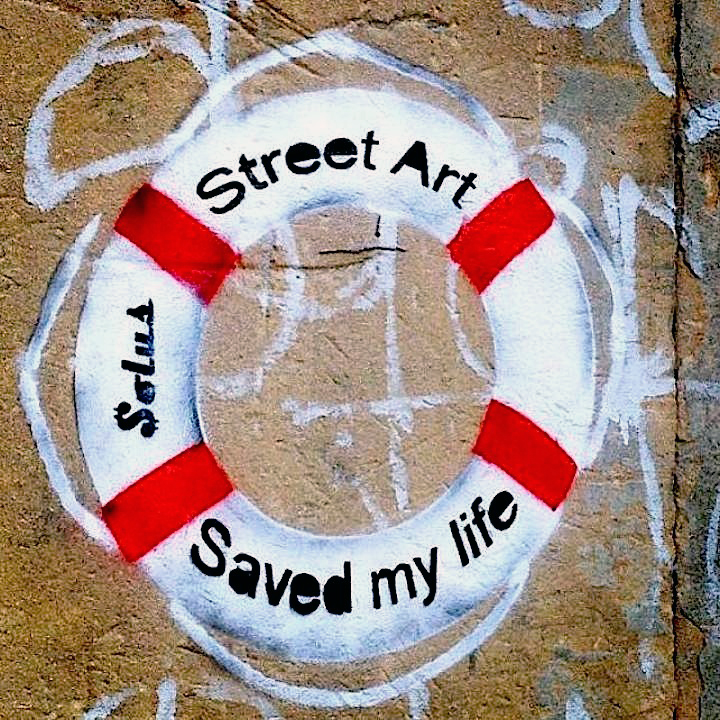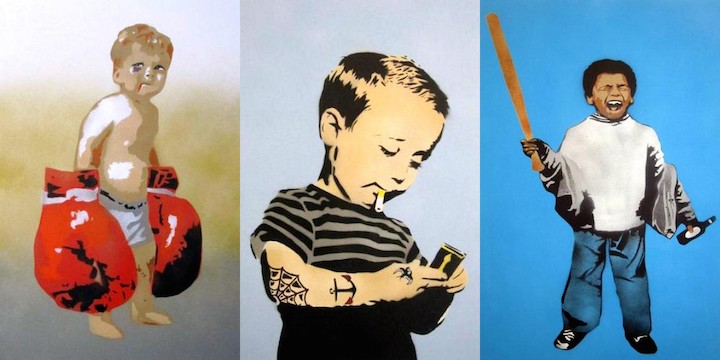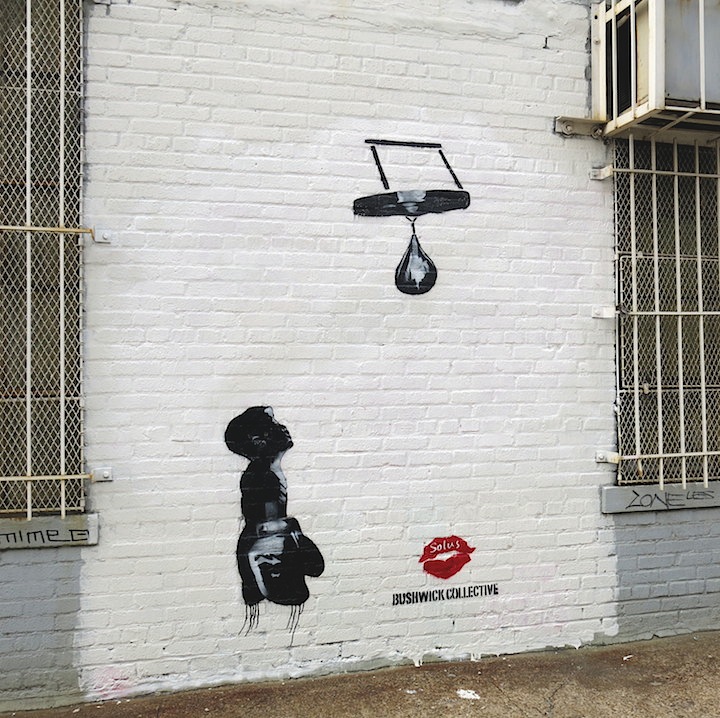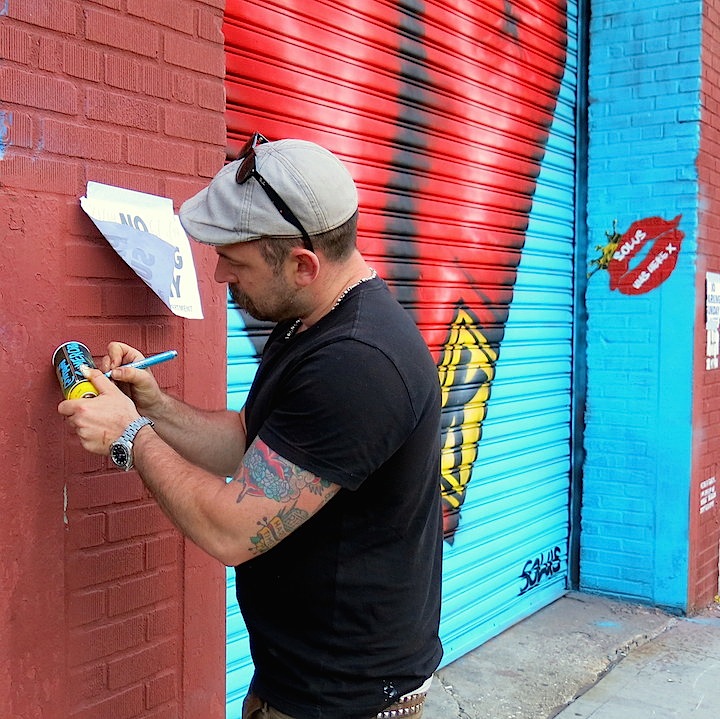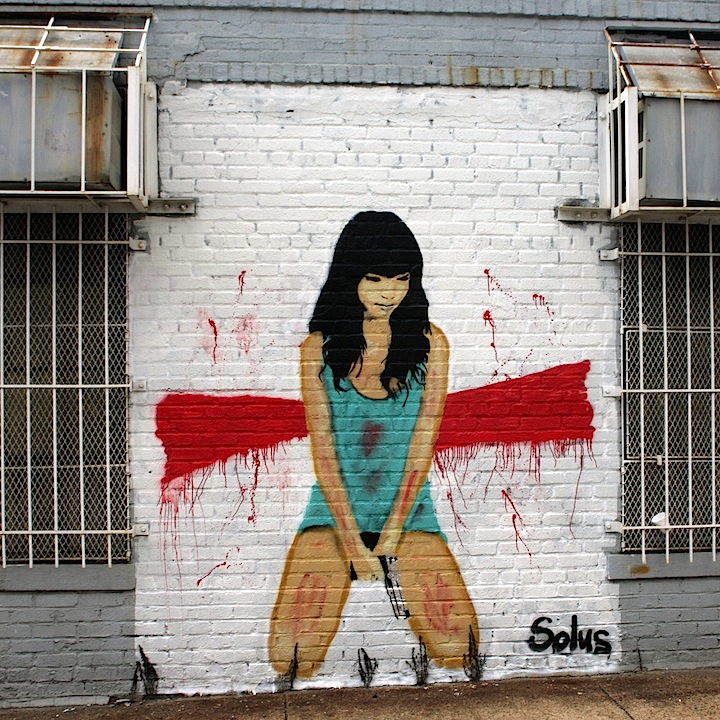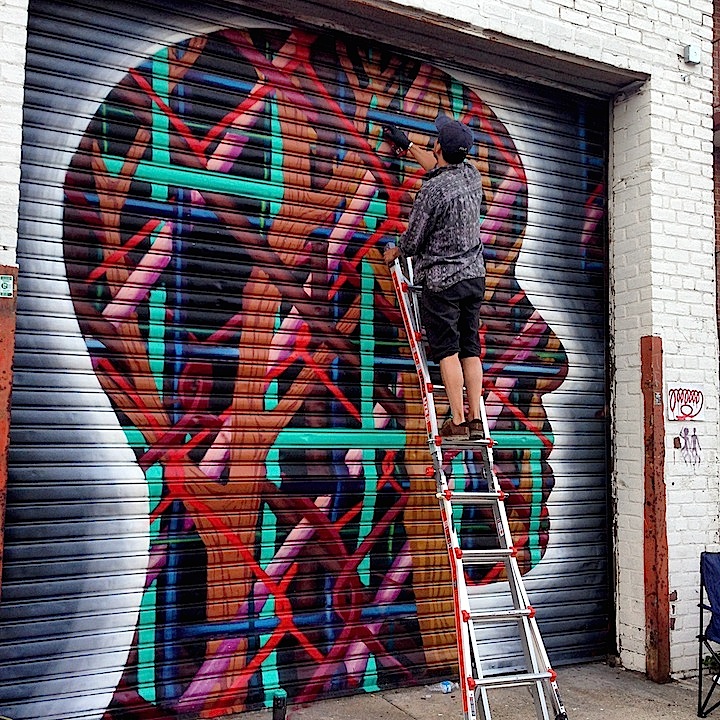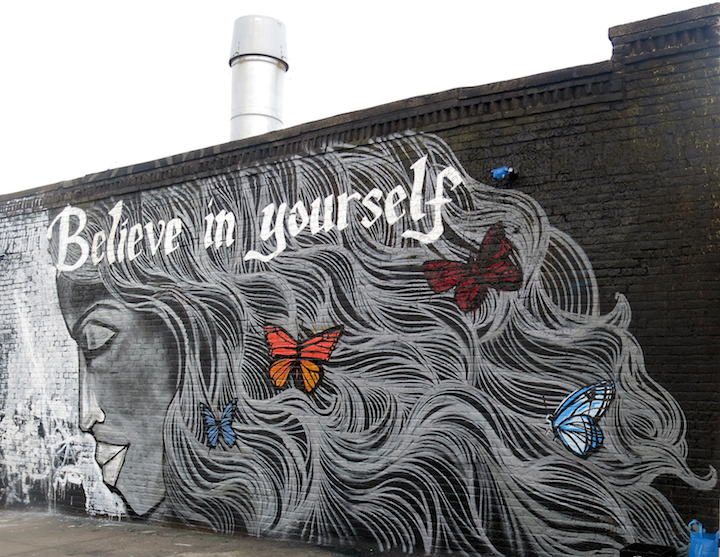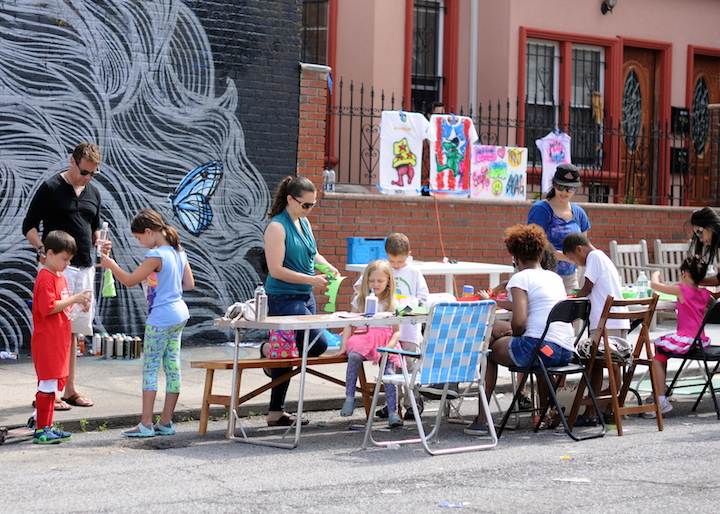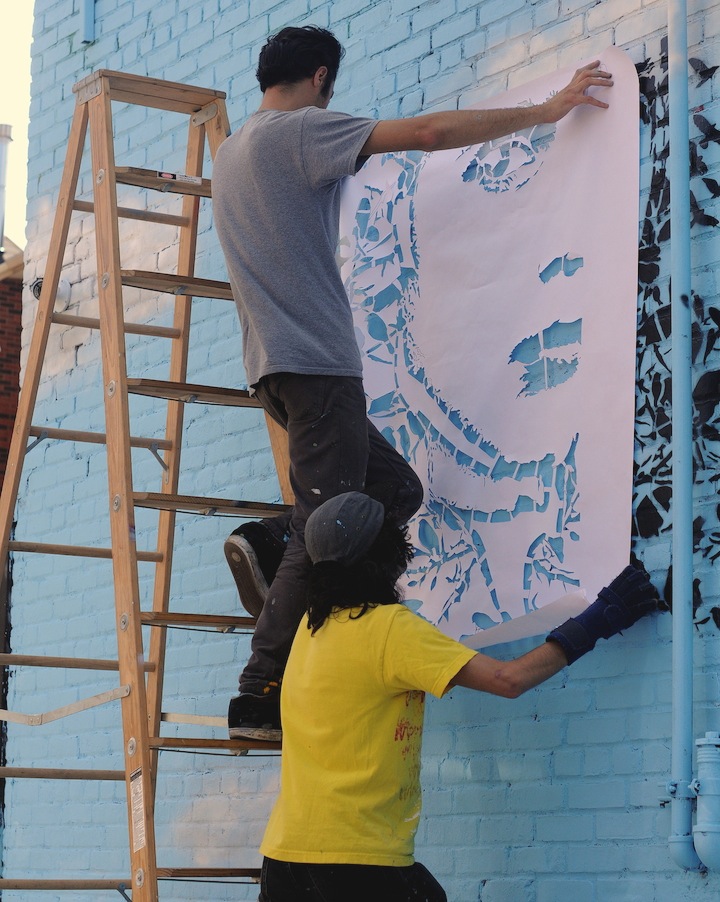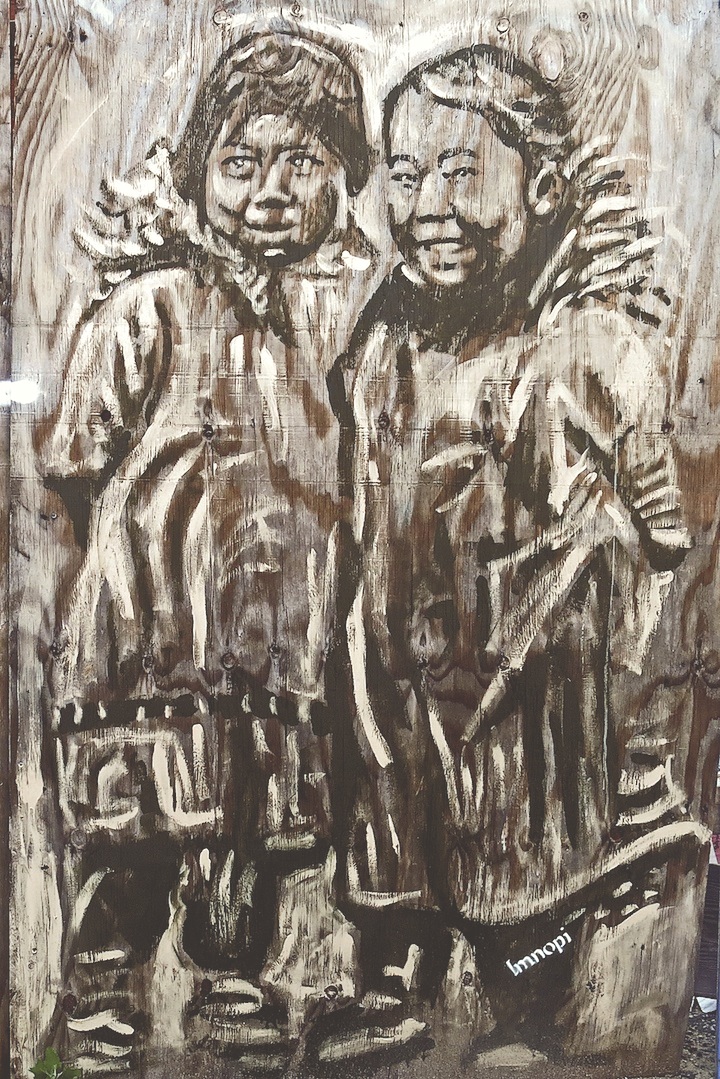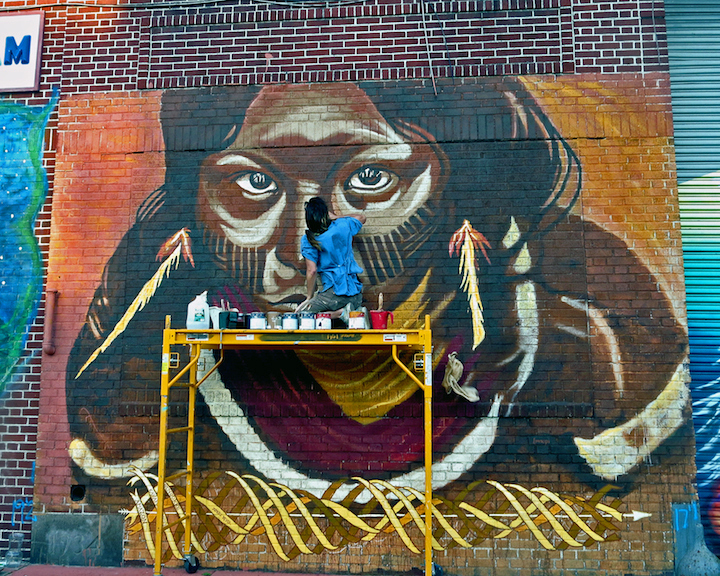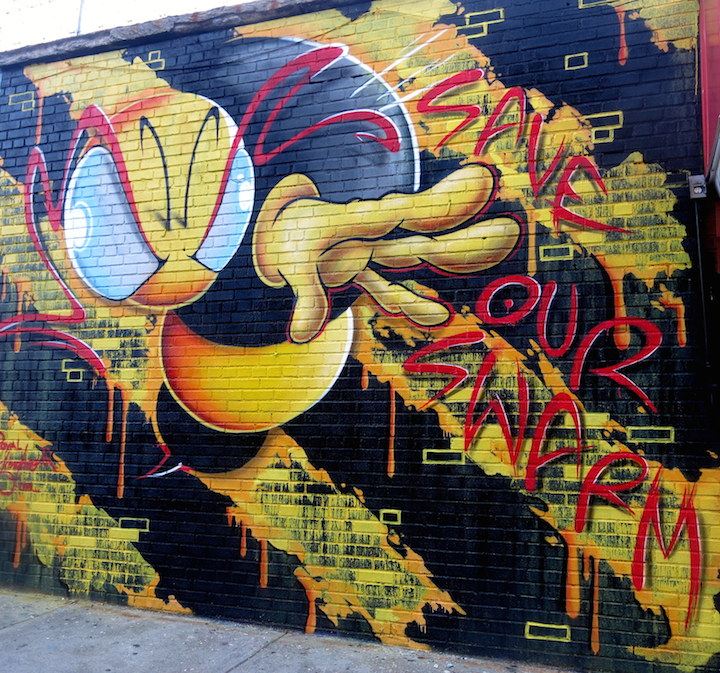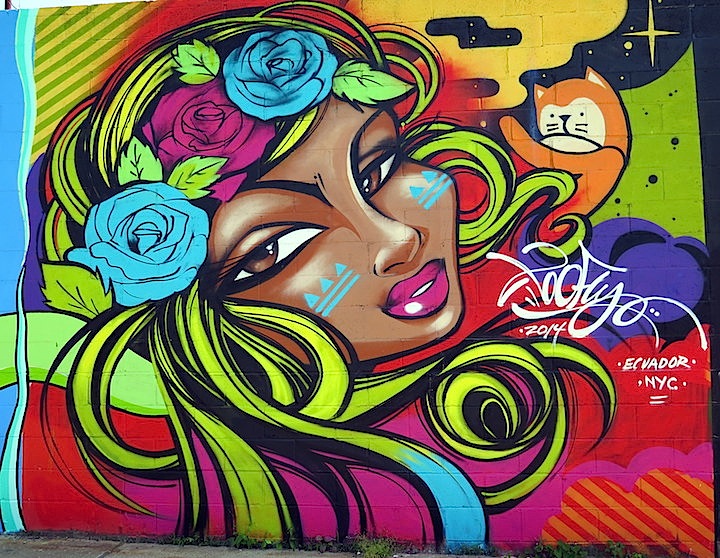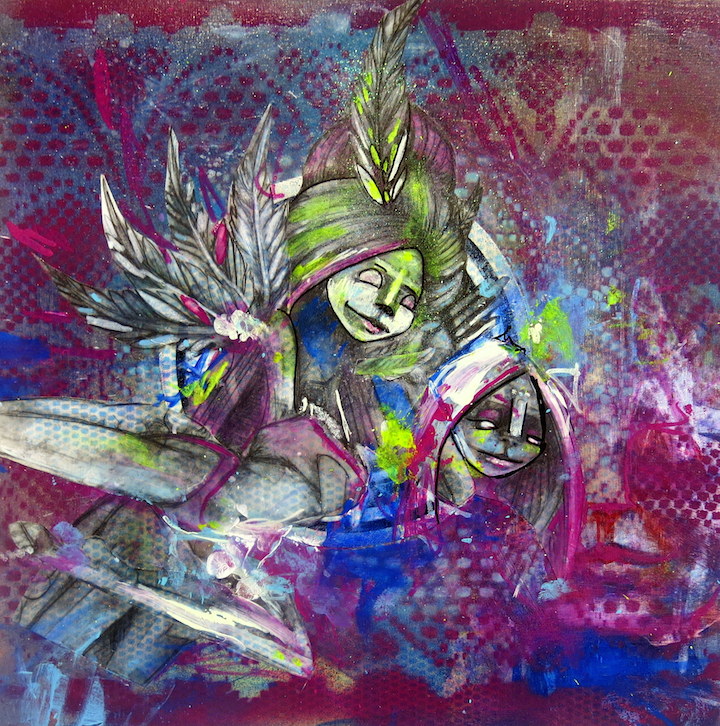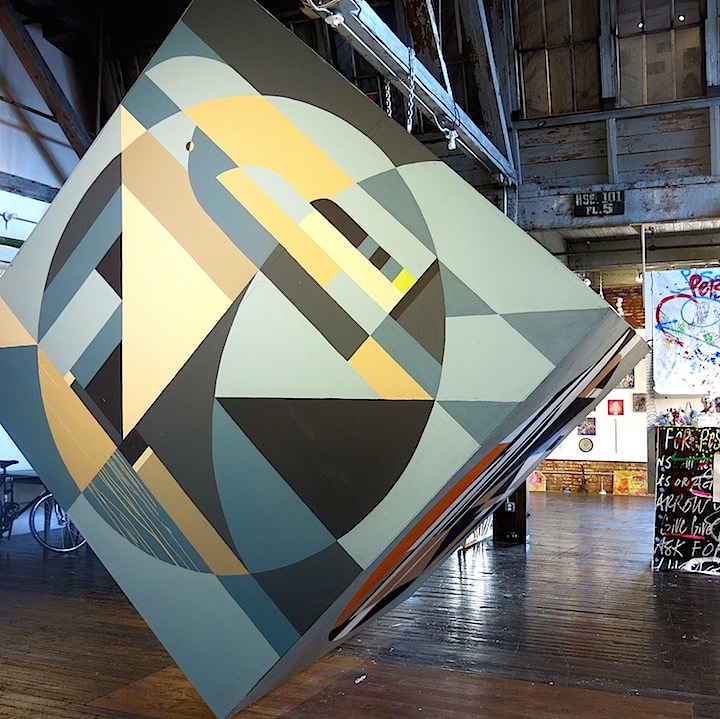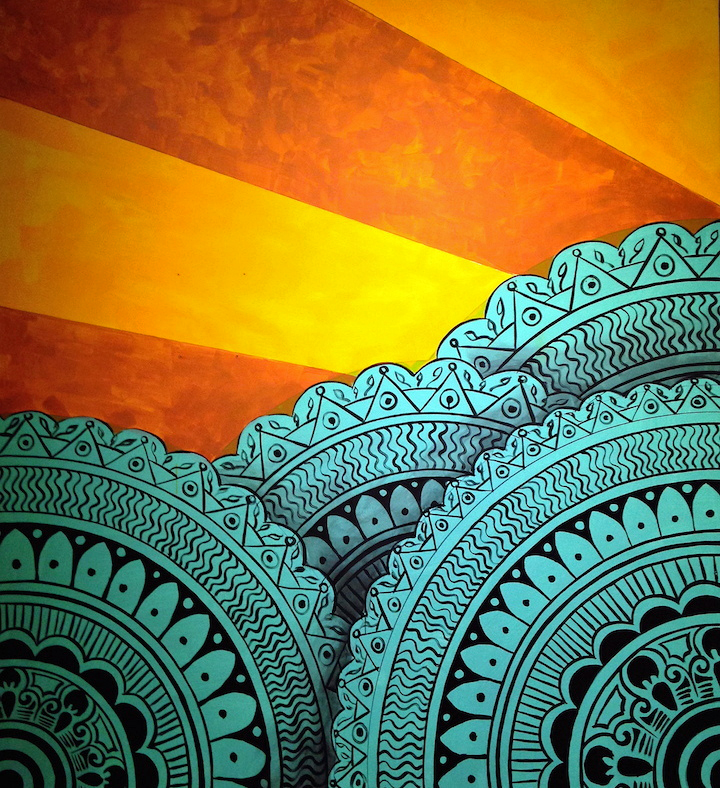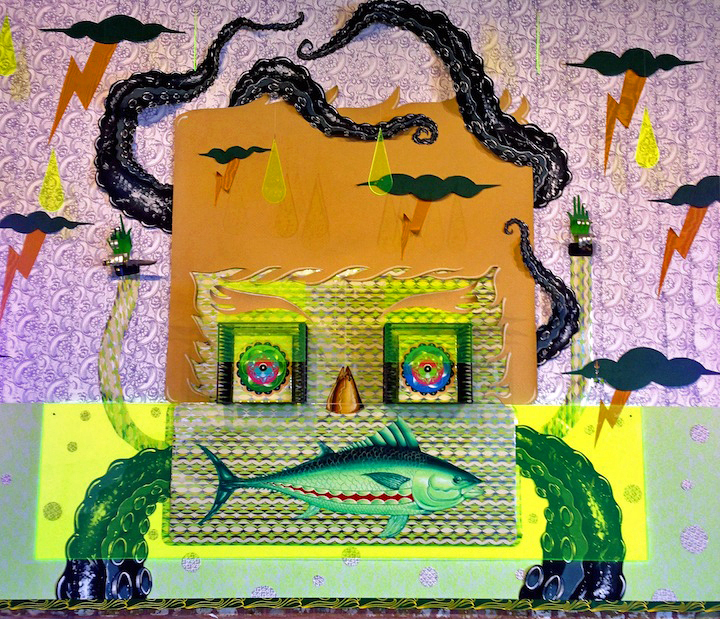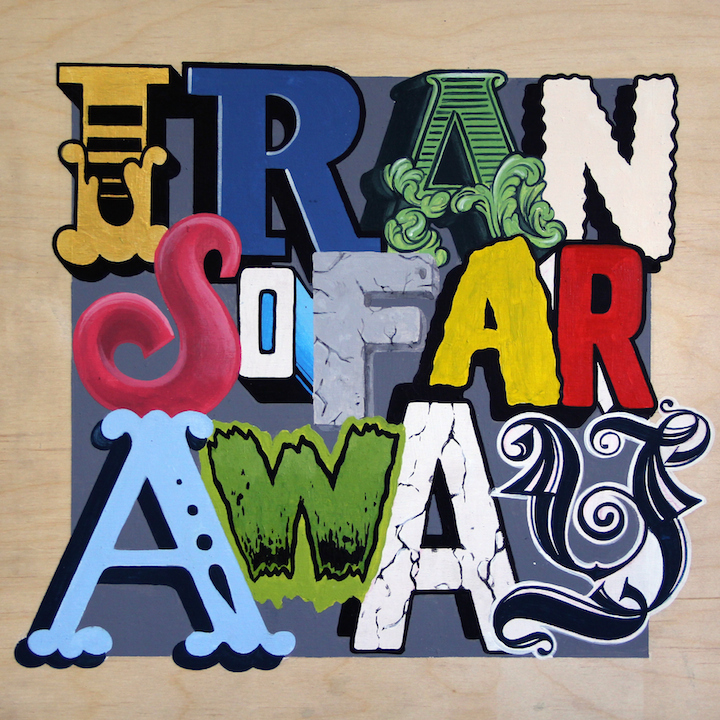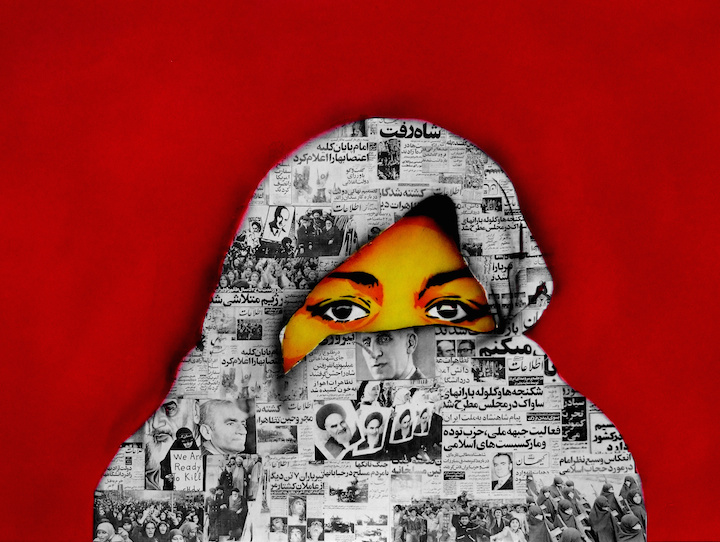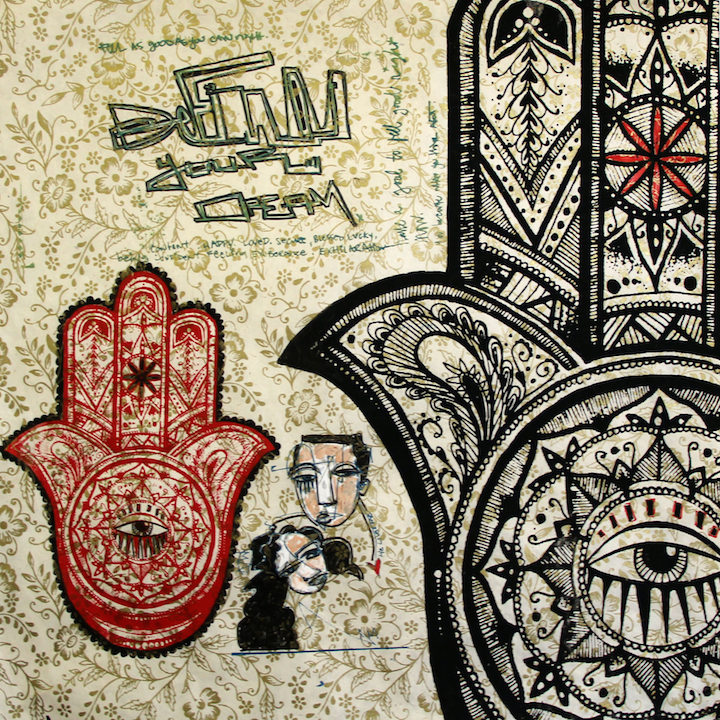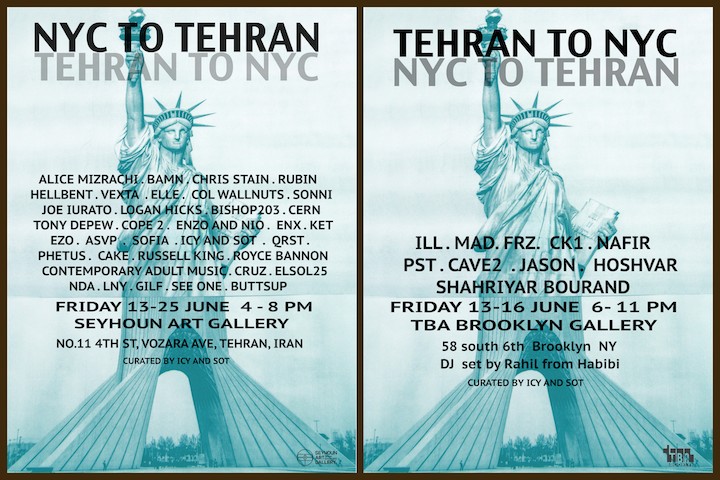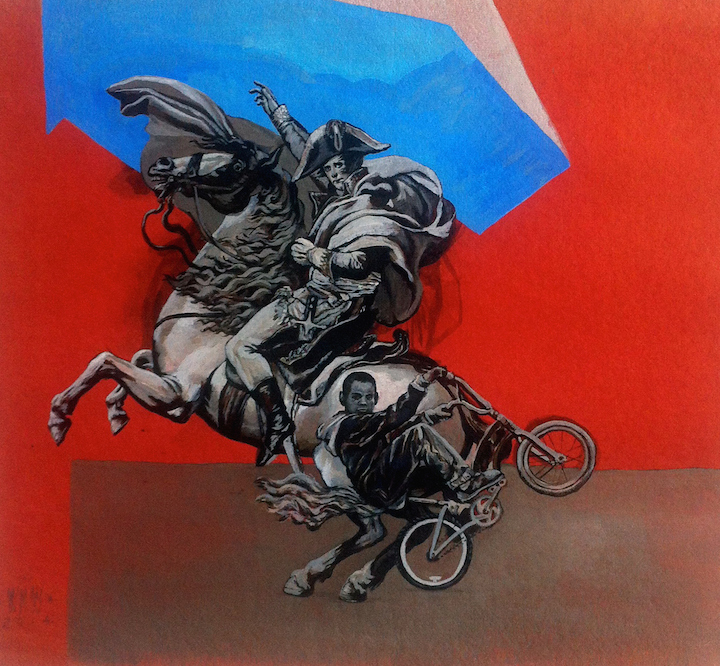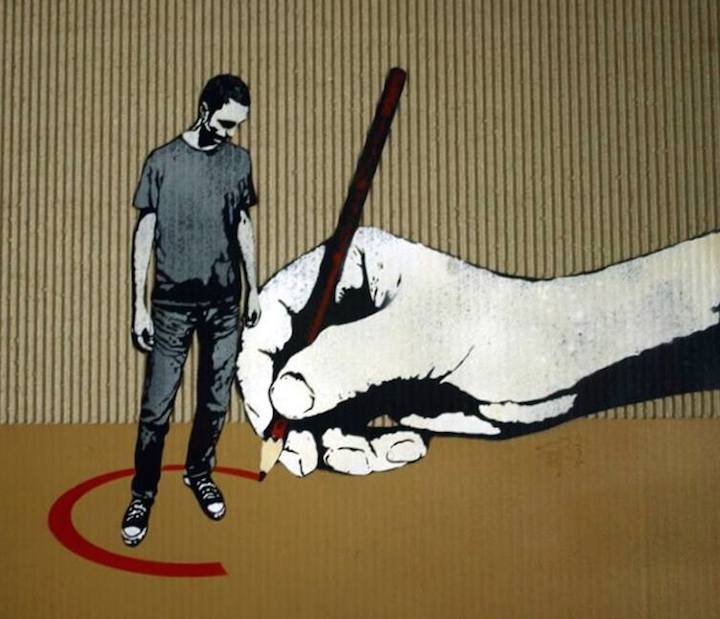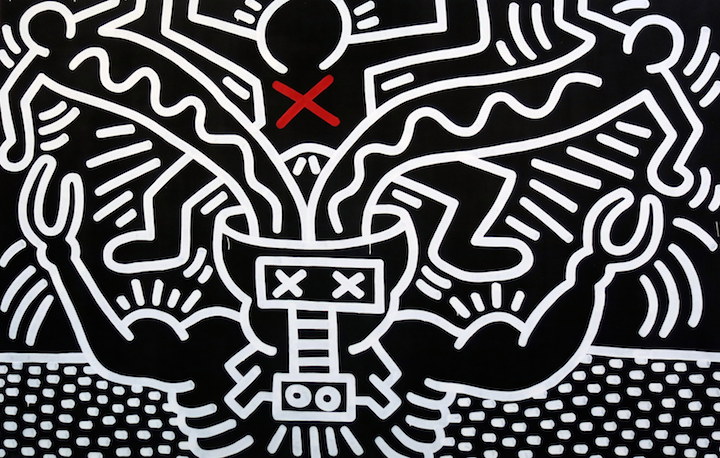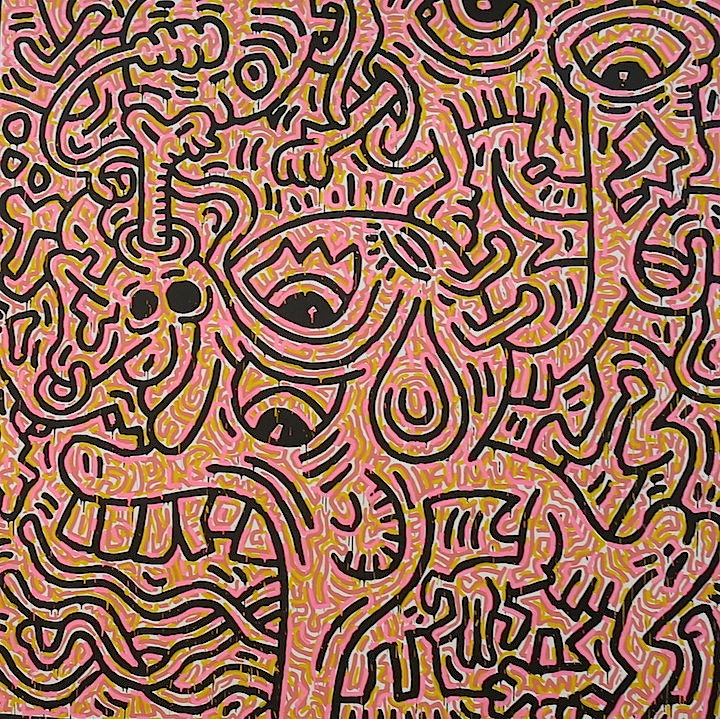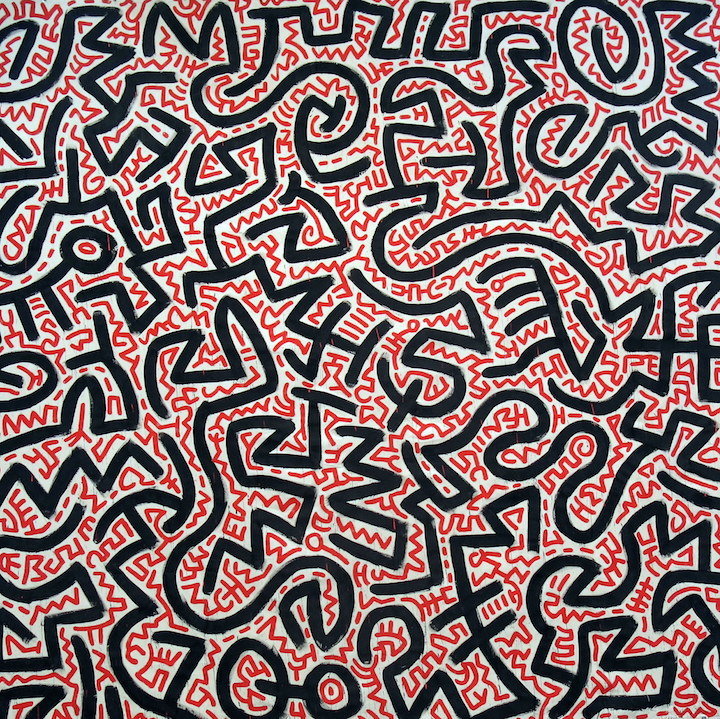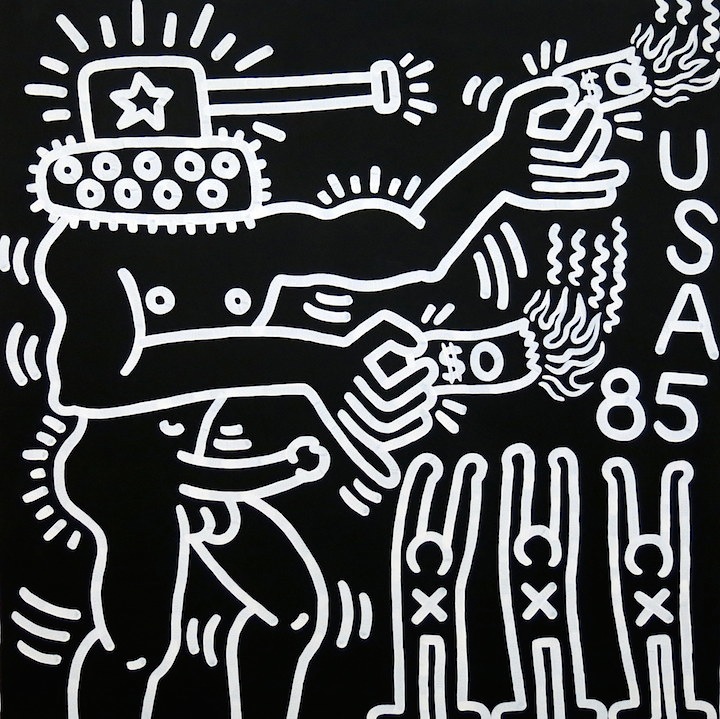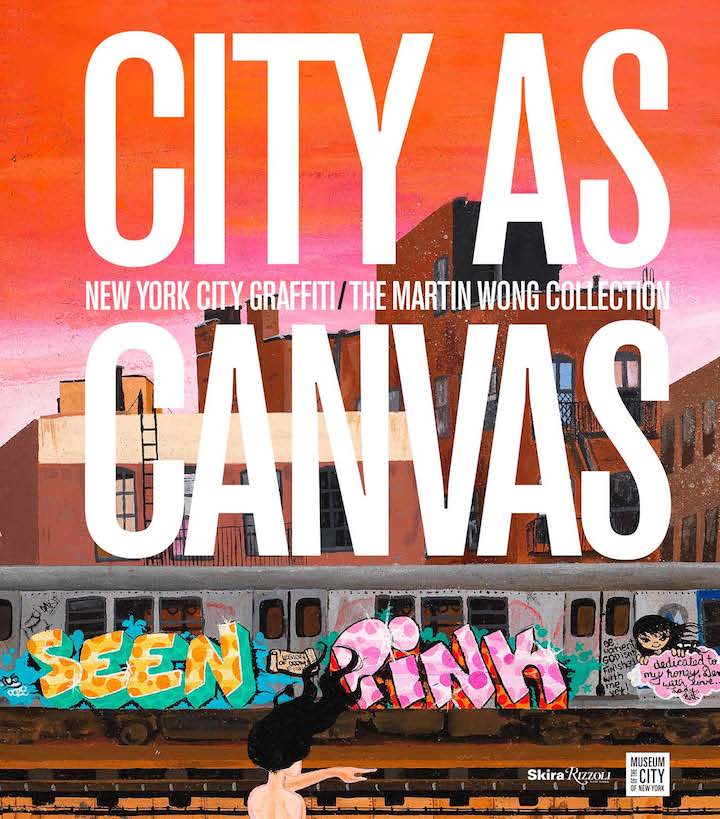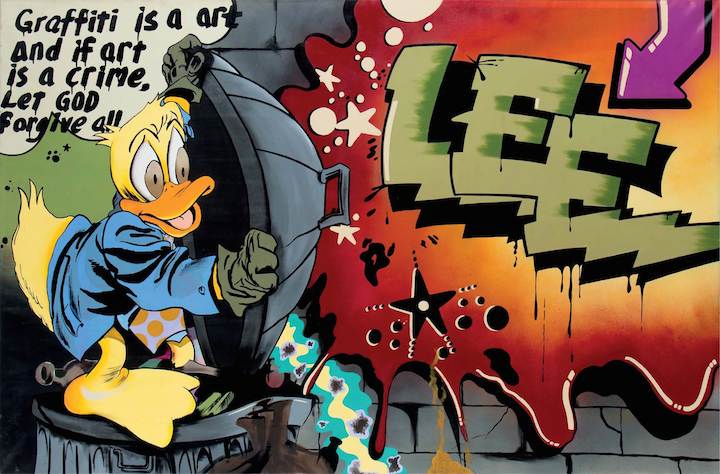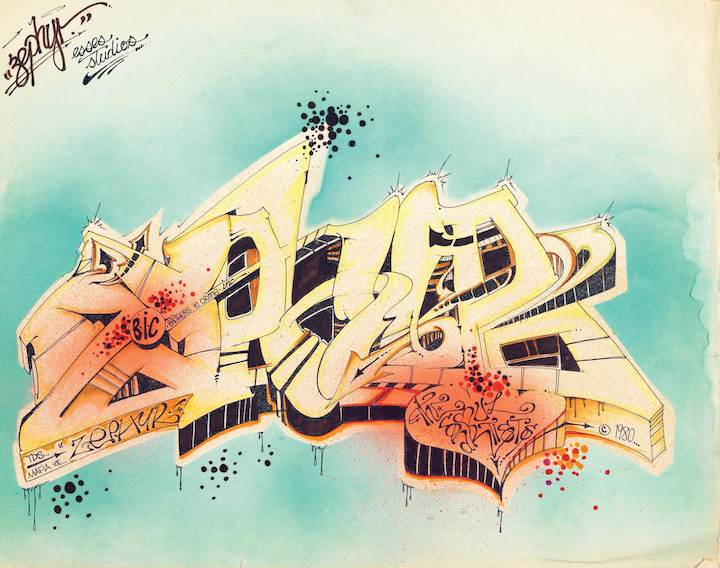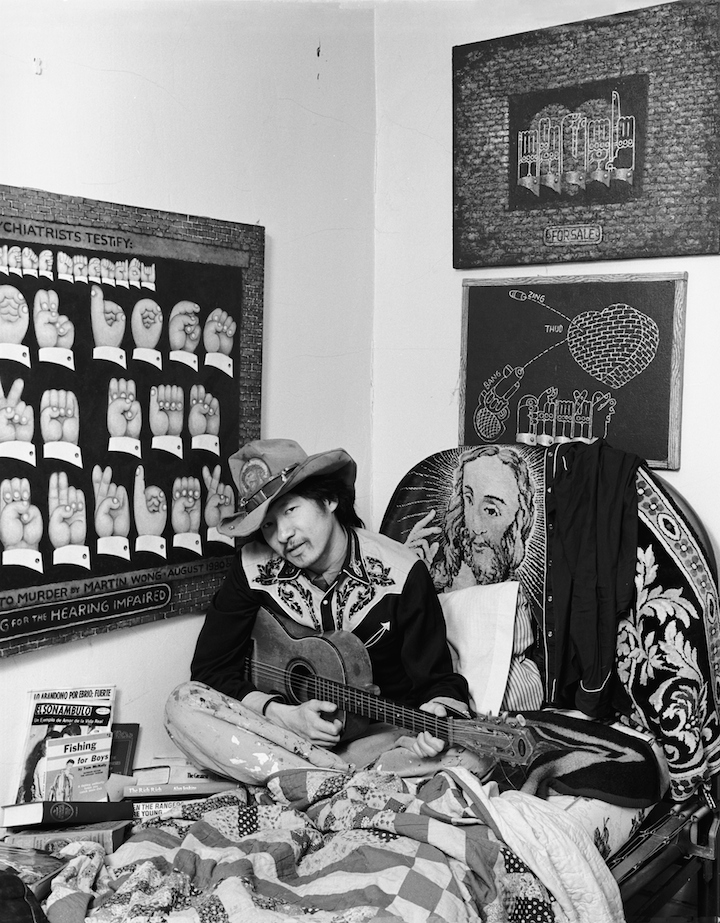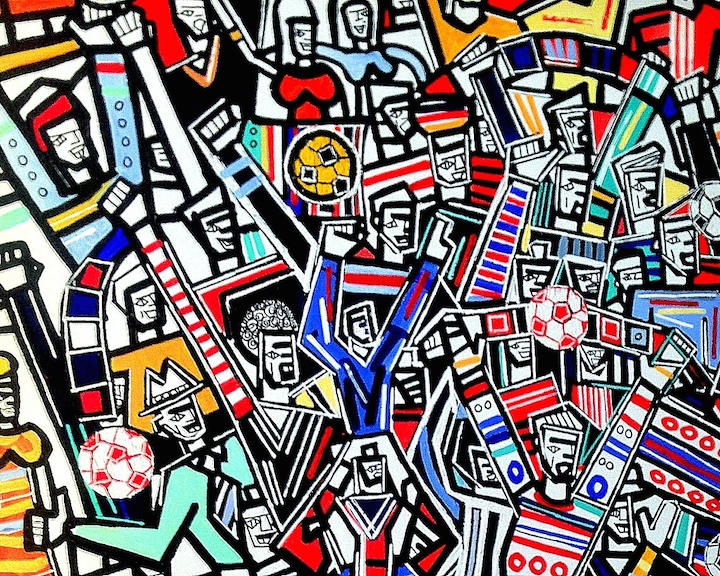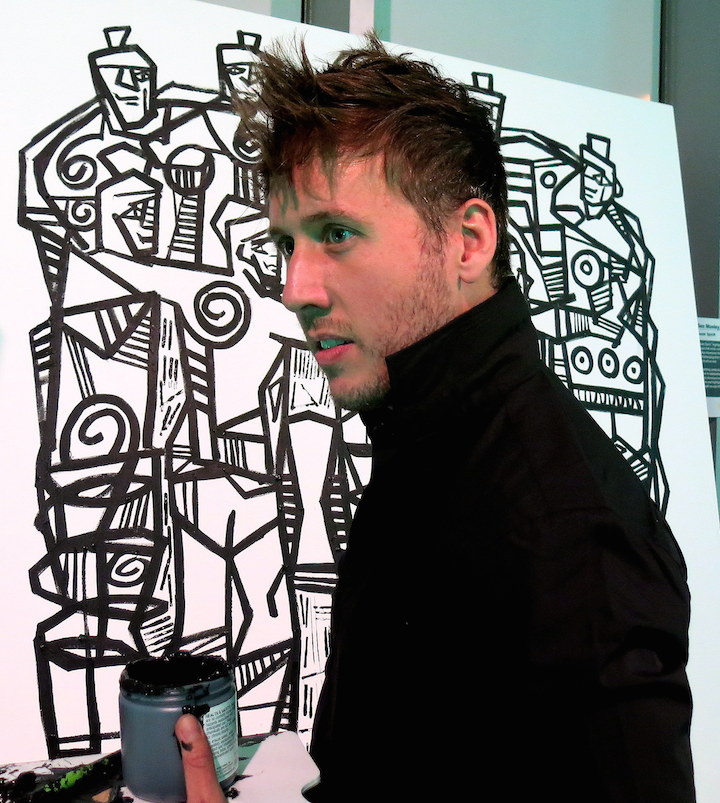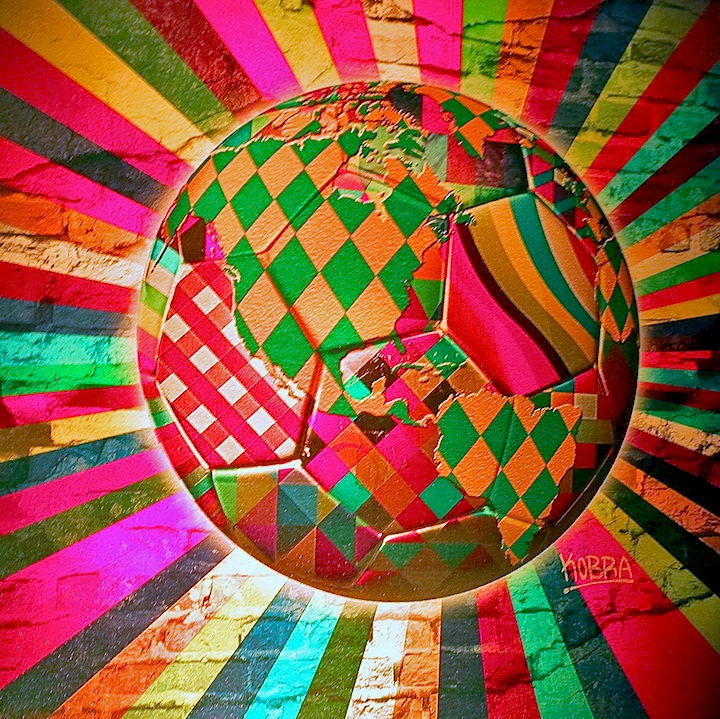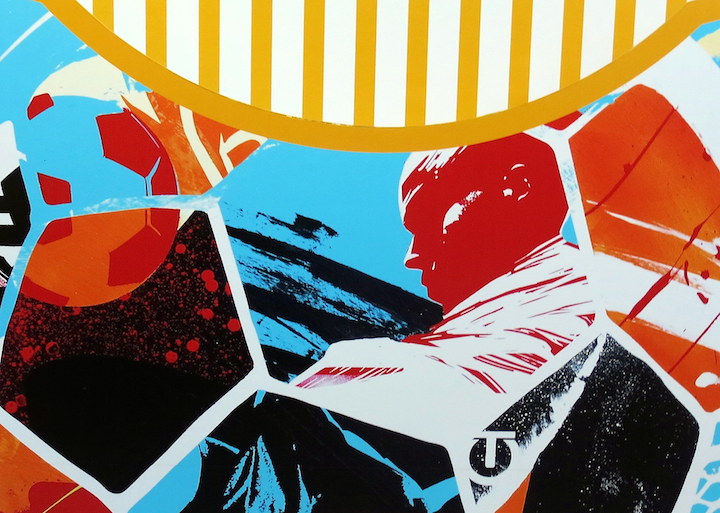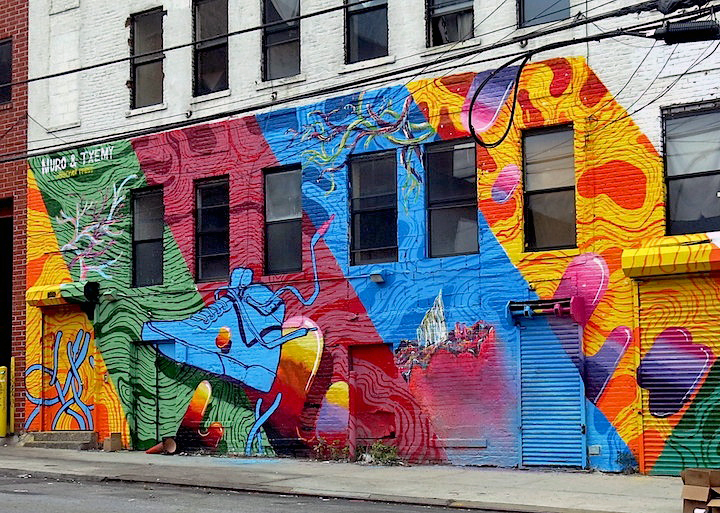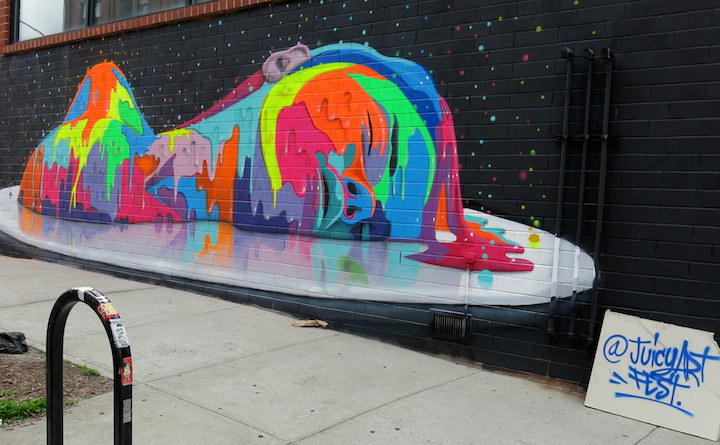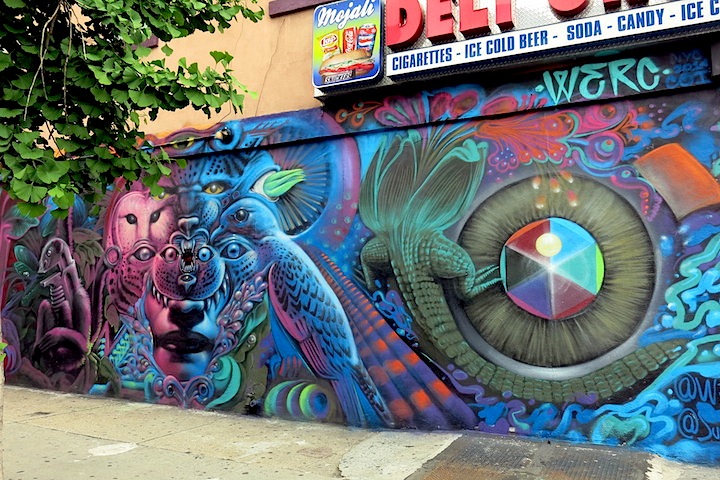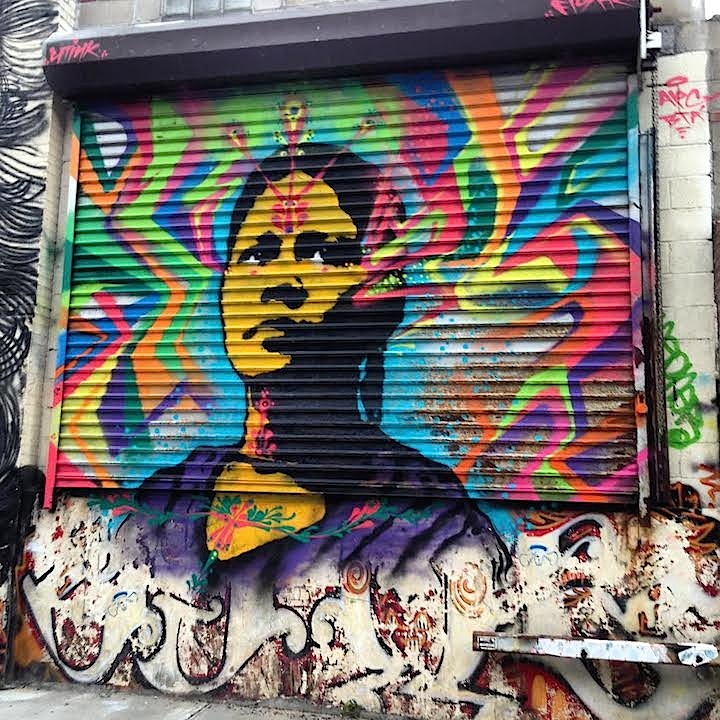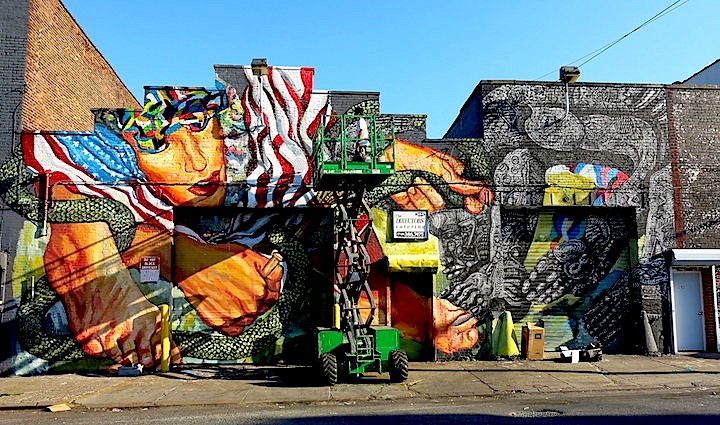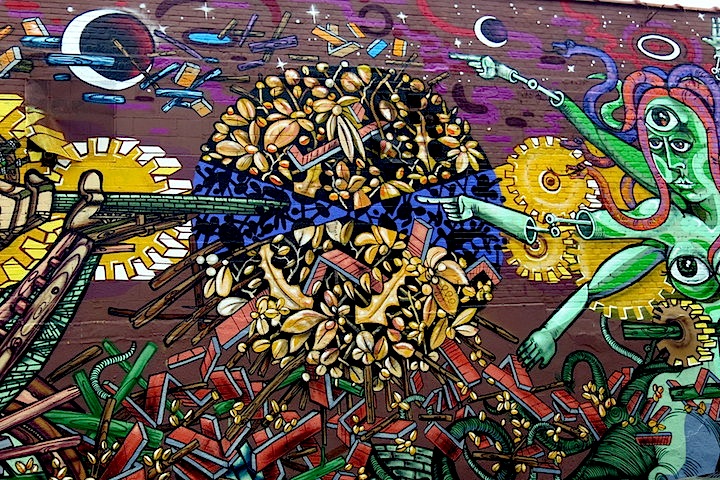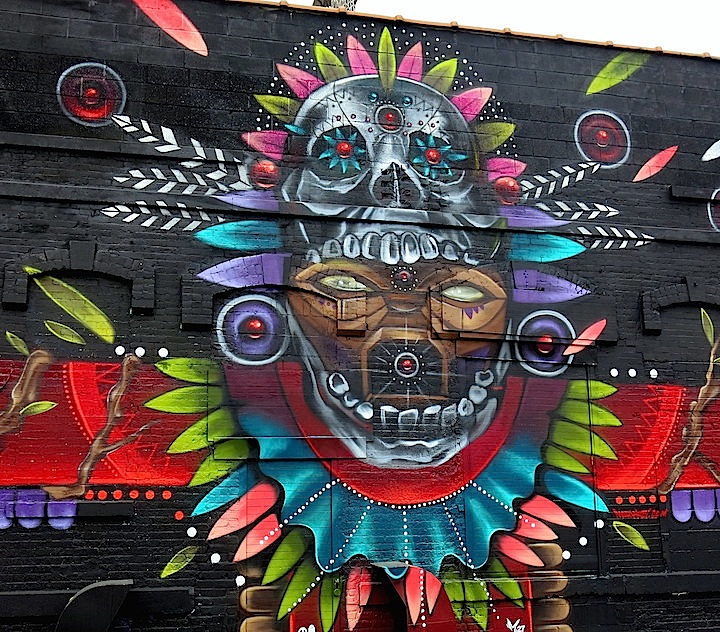A master of bold, abstract graffiti-inspired art that fuses elements of mathematics, science and design, Baltimore-based Billy Mode is a frequent visitor to NYC. Here he has graced walls in Brooklyn and in Queens with his strikingly stylish aesthetic, often in collaboration with fellow Baltimore native Chris Stain. I recently had the opportunity to speak to the talented artist:

When and where did you first get up?
It was around 1984-85 in Baltimore. I was 11 or 12.
Who or what inspired you at the time?
Most of my friends at the time were older than me. My friend Eric Meek and I went to see Beat Street at the Grand Theatre in Highlandtown when it first came out. We were so hyped that we were doing backspins and such in the theatre while the movie was playing! Soon after, Eric got hold of a copy of Subway Art by Martha Cooper and Henry Chalfant. I’ve been grateful for these two introductions to the movement ever since.
Had you any preferred surface or spot at the time?
When I first began, it was mostly alleyways with Pilot markers and spray paint. But I soon moved on to rooftops. It was fun and I quickly became addicted to the adventure of it all.
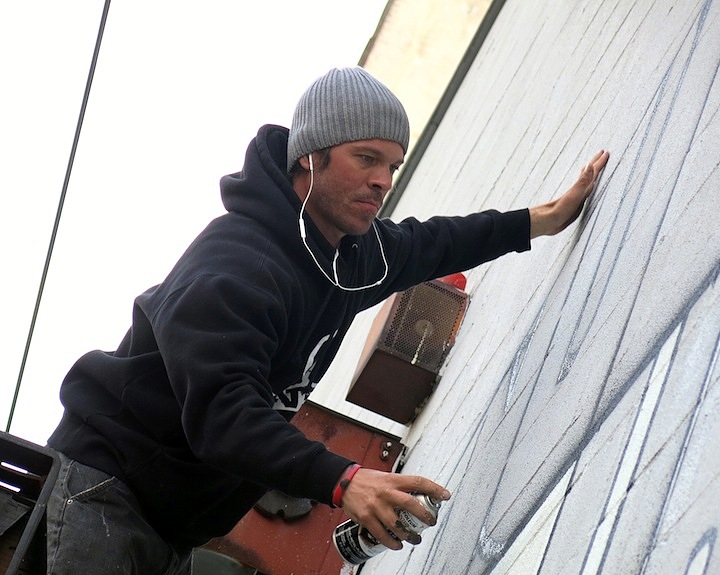
Were you ever arrested back then?
I was caught bombing a bus. But nothing major happened. I got community service.
How did your family and friends feel about what you were doing?
My folks were cool. I was basically a “good kid.”
Have you any thoughts about the graffiti/street art divide?
There is a divide, but I don’t think about it. If it’s good, it’s good. It doesn’t matter whether it’s graffiti or street art.
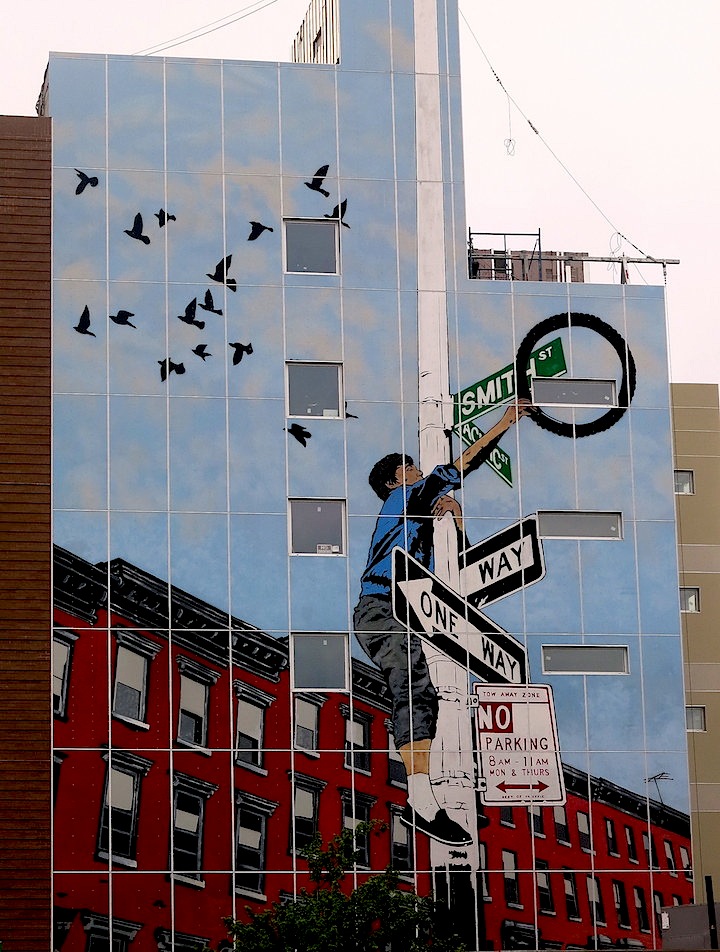
What about the movement of street art into galleries?
I’m fine with it. I’ve been exhibiting in galleries since the mid 90’s. Galleries offer us artists a different way to share our art.
Why do you suppose graffiti is held in higher esteem in Europe than it is here?
Arts in general are more celebrated there. Plus I think the hip-hop culture is embraced differently In Europe. It is viewed more positively.
Do you prefer working alone or collaborating with others?
I enjoy both. Collaborating is fine — so long as I don’t have to compromise too much and lose too much of my own concept. Collaborations can’t be forced.
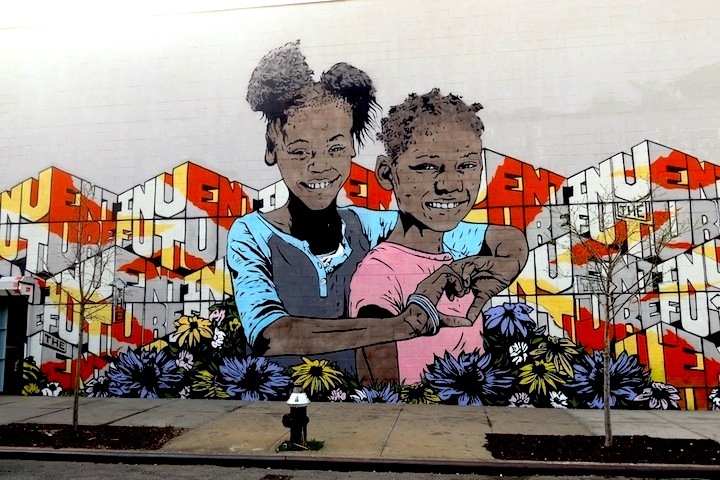
Your collabs with Chris Stain are among our favorite pieces. Is there anyone else with whom you’d like to collaborate?
I’ve thought about collaborating with Joe Iurato and Rubin. To me a good collaboration is when the works balance each other out. One of my favorite exchanges was with one of my best friends, Pat Voke. He always made me want to push my limits and seek out deeper meanings in the work process. I hope to collaborate with him again.
What inspires you these days?
Letter forms continue to inspire me; structures, in general, inspire me. When I sit down to work, I try to expand on what I’m developing — so it continues to grow. My graffiti background influences my desire to be inventive and contribute to the movement.
Are there any particular cultures that have influenced your aesthetics?
They’re not quite cultures, but I’m increasingly influenced by the fusion of mathematics and science.
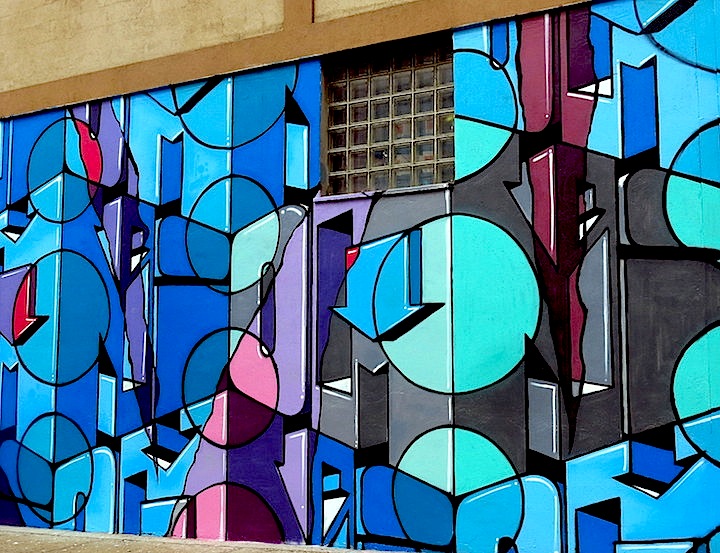
Do you work with a sketch in hand or do you just let it flow?
These days I do have a sketch in hand which helps with the layout. When I do a more traditional graffiti style, I prefer freestyling it.
Are you generally satisfied with your work?
About 80% of the time! I’m always looking to improve.
What do you think of the role of the Internet in all of this?
We live in the future. Information travels faster than ever which, I think, allows for exponential growth. I do enjoy seeing artistic developments happening daily. But I have noticed that regional styles have been diluted. The grass roots of graffiti culture have been slowly changing, and so have the rules of etiquette.
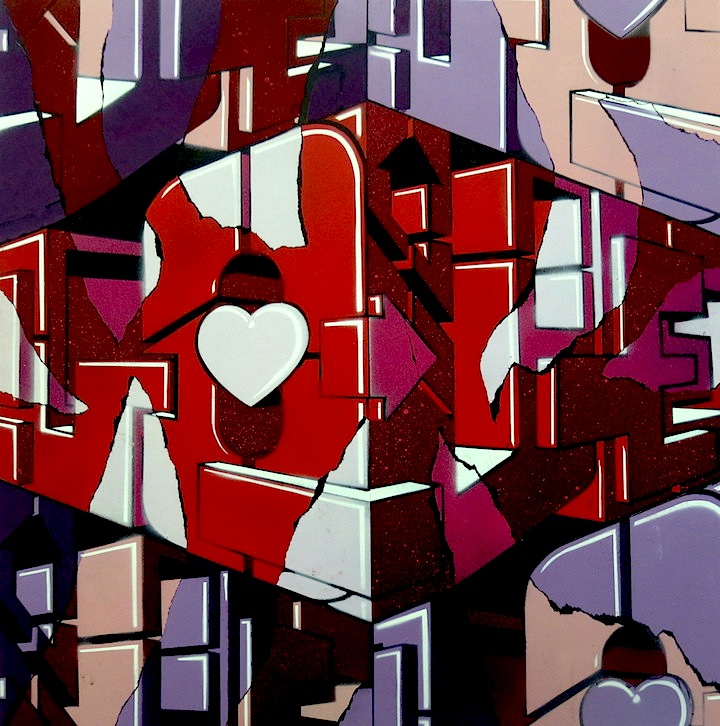
Do you have a formal arts education?
I do have a BA from Maryland Institute College of Art (MICA), but I always credit my graffiti background as my formal training. I’ve been very fortunate to have good friends to learn from and grow with.
What’s the riskiest thing you’ve done?
Bombing in daylight on super visible spots!
What are some of your other interests?
Sleep, and when I’m not injured, skating pools.
What’s ahead?
I intend to do more murals and conjure mathematic visual formulas into reality. I will keep on expanding!
Interview conducted and edited by Lois Stavsky; photos 1. At Welling Court in Astoria, Queens with Chris Stain by Lois Stavsky; 2. At the Bushwick Collective by Dani Reyes Mozeson; 3. In Cobble Hill, Brooklyn with Chris Stain and Cre8tive YouTH*ink members — based on a Martha Cooper photo by Lois Stavsky; 4. At the Bushwick Collective by Dani Reyes Mozeson; 5. At the Bushwick Collective by Lois Stavsky; 6. At 17 Frost for OutDoor Gallery book launch by Lois Stavsky
Keep posted to our Facebook page for images of Billy Mode’s new mural, done in collaboration with Chris Stain, for the 5th Annual Welling Court Mural Project, opening this Saturday, June 14.
